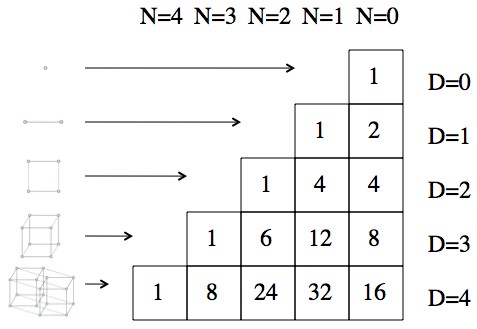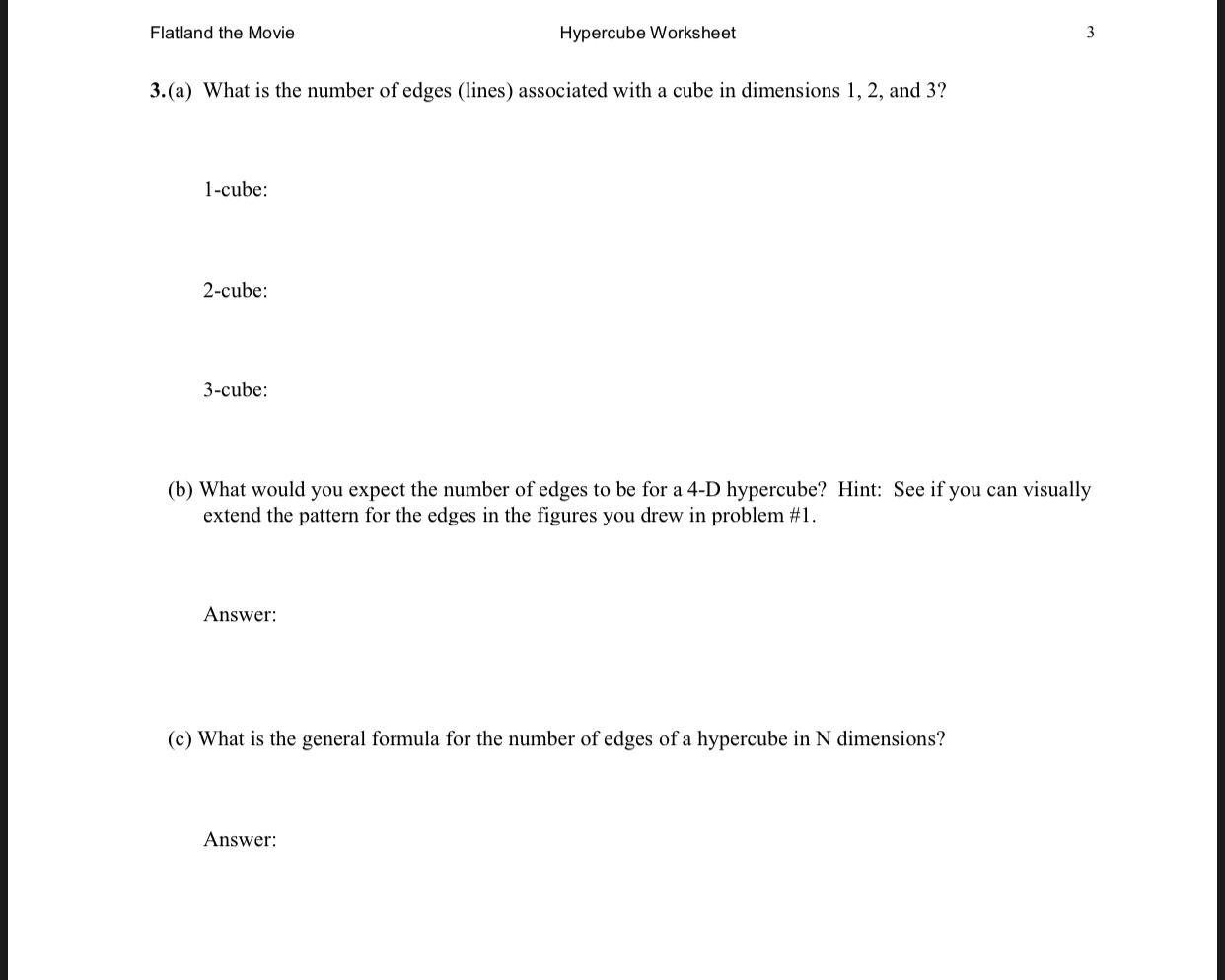
Visualizing four dimensions isn’t easy when you live in three and use computer screens in two. These eight cubic facets are oriented such that two parallel facets lie on opposing sides of the tesseract in each of the four spatial directions. Each cube becomes a side of the tesseract, analogous to the square faces of the cube, except three-dimensional. It is far more difficult to imagine than for the squares, but using the fourth dimension we could fold these eight cubes together to form a tesseract. It looks a lot like Image 2, except instead of a flat collection of six squares we have a three-dimensional collection of eight cubes. We can follow the same approach to construct a tesseract. Each of the squares becomes a flat face of the cube. You take two-dimensional squares and use the third dimension to fold them into a cube. This is another approach that we can use to construct a cube from squares. Imagine folding the six squares in Image 2 into a closed, hollow object. So whenever we talk about a 3-D visualization of a 4-D object, we really mean a 2-D representation of a 3-D representation of the real 4-D object. We can't directly draw 4-D objects, but we can't directly draw 3-D objects either since drawings are two dimensional. This is an important fact to keep in mind when discussing the 4-D tesseract. We just know to interpret the fact that these directions are perpendicular in three dimensions from how they are drawn on the two-dimensional computer screen. In fact, even the blue z direction isn't actually perpendicular to the flat x and y directions in the diagram. In the diagram, the orange w direction is not actually perpendicular to the other three, but it is the best we can do in a three-dimensional world.

This is shown in the last panel of Image 1. Stretch the cube out a distance equal to the length of one of its sides into this new, fourth direction and you will have swept out a tesseract. We only have three spatial dimensions, and a cube inhabits all three, but try to imagine a new direction perpendicular all of the up-down, left-right, and back-forth directions of the cube. At each step so far, we took the original object and swept it out in a new direction perpendicular to every direction in the original object. Now we know the procedure to use to construct a tesseract from a cube. You will have swept out a three-dimensional cube, shown in the third step. Imagine pulling the square outward in a direction perpendicular to its surface. We can do the same sort of thing with our square to form a cube. For a good interactive version, try this link. This is shown in the second step of the diagram. If you sweep out a distance equal to the length of the line, you will form a two-dimensional square. Now imagine taking hold of this line and sweeping it out in a direction perpendicular to its length. We form a one-dimensional line from a point by sweeping, or stretching, the point straight out in some direction. Let’s start from the zero-dimensional point and build our way up to the four-dimensional tesseract. To begin thinking about the relationship between tesseracts and cubes, it is helpful to consider the relation of cubes to squares, squares to lines, and lines to points. The tesseract is analogous to the cube in the same way that the cube is analogous to the square, the square to the line, and the line to the point. However, we can develop a general understanding of the tesseract by learning its structure, examining representations of the shape in lower dimensions, and exploring the math behind it. As inhabitants of a three-dimensional world, we cannot fully visualize objects in four spatial dimensions.

If you find this hard to picture, don’t worry. Instead of a cube’s eight corners, or vertices, a tesseract has sixteen. The sides of the four-dimensional tesseract are three-dimensional cubes.

More specifically, it is the four-dimensional hypercube. The tesseract, or tetracube, is a shape inhabiting four spatial dimensions. 2.1.2 Using Coordinates to Find the Facets of the Tesseract.2.1.1 Using Coordinates to Find the Edges of the Tesseract.


 0 kommentar(er)
0 kommentar(er)
